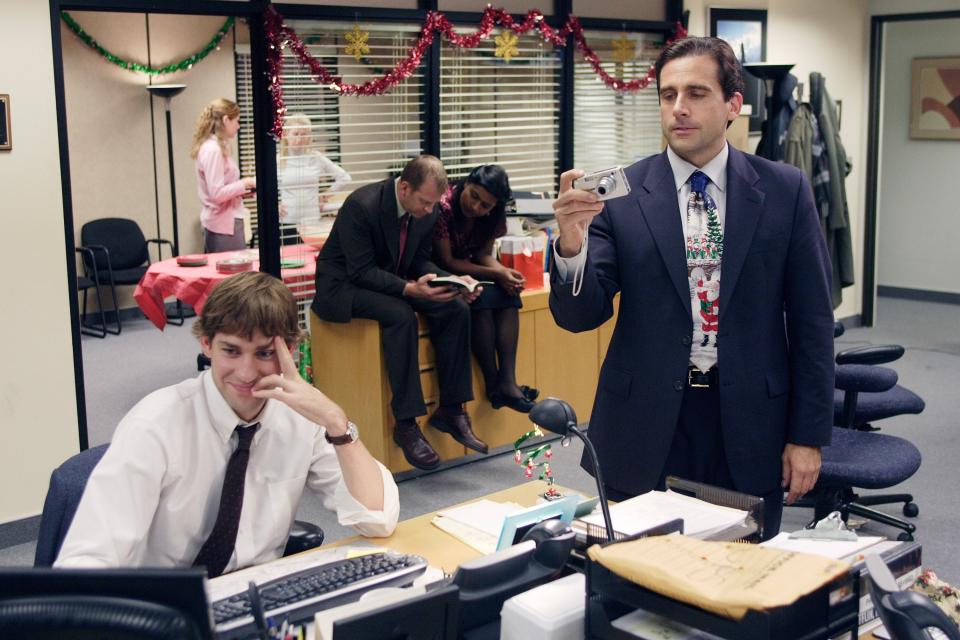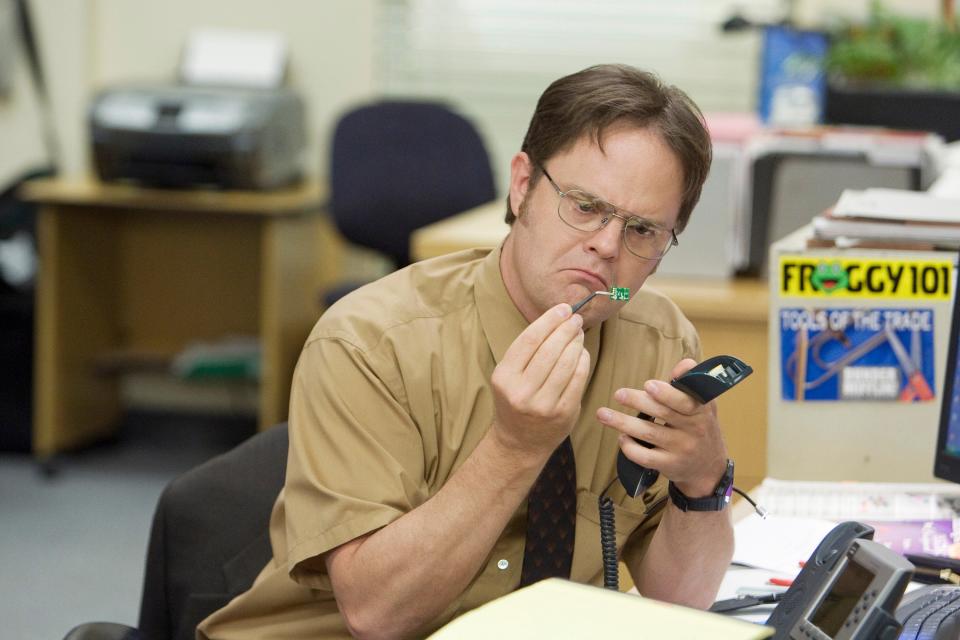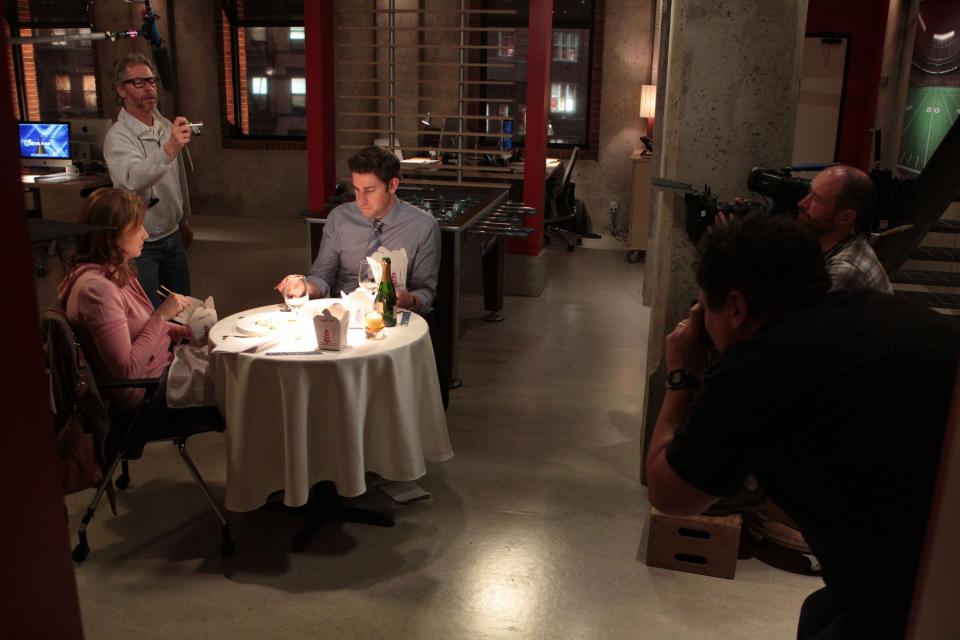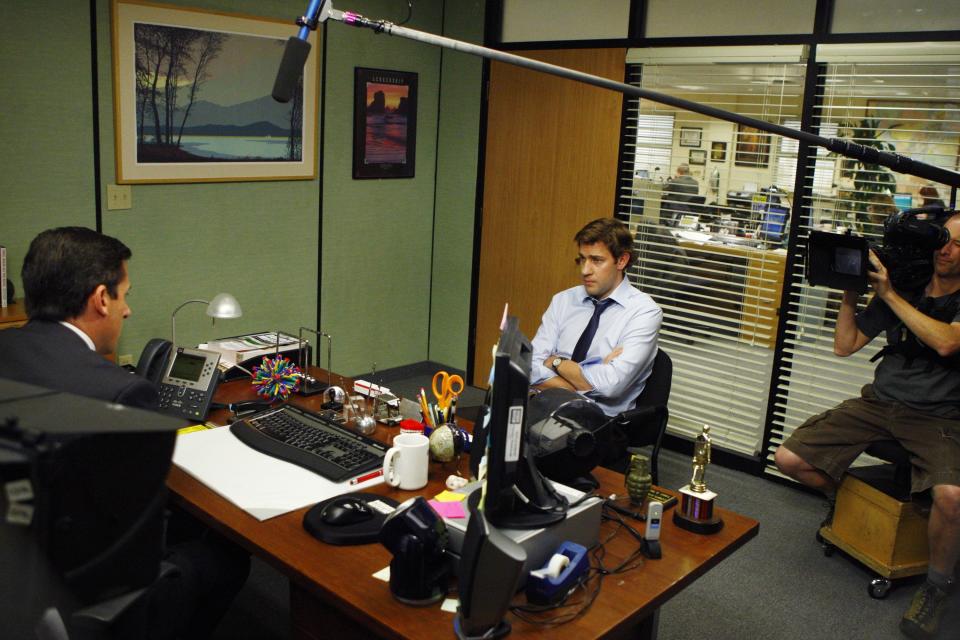How the Remarkably Unremarkable World of Dunder Mifflin Was Built
In 2005, the cast of The Office settled into a nondescript office space in Culver City, California, for a read-through of the pilot episode. When the actors were finished, studio and network executives asked to see the show’s set. You’re sitting in it, they were told.
Therein lies the magic of The Office, which premiered 15 years ago on March 24 and still maintains a fiercely devoted following long after going off the air. The series followed employees at the fictional Dunder Mifflin Paper Company in Scranton, Pennsylvania, and found joy and heartache in life’s small, ordinary moments. In order for that to happen, a hyper-realistic world needed to be built.
Steve Rostine, the show’s set decorator, was given the task of bringing this unremarkable universe to life. “It’s very hard to create these middle-of-the road environments because you don’t want your set to be the star,” Rostine tells AD.

The Office
He bought institutional-looking artwork for the walls and tracked down old desks with matching credenzas from a bank. The problem was, the desks looked a little too nice. Rostine gave them to a carpenter, who roughed them up, then sawed off the edges so they could be crammed together. Dunder Mifflin ended up feeling so much like a real office that visitors would sometimes try to use the bathrooms, which—much to their misfortune—didn’t actually work.
After the first season wrapped, creator/showrunner Greg Daniels moved the set to Chandler Valley Center Studios, a squat gray building in the San Fernando Valley. “He didn’t want the show to be shot on a studio lot with a bunch of other sitcoms,” Matt Flynn, the series’ art director and production designer, recalls. “He didn’t want that sitcom feel to rub off on The Office.”
Ken Kwapis, who directed 13 episodes, including the pilot, adds: “The area where we shot is very scrubby and industrial, and I think the only other film production that went on there was porn. It helped the cast feel like we weren’t making something in a Hollywood studio.”

The Office - Season 9
The office had an open floor plan so the camera could capture all of the actors at any time. Everyone had to be on set and in character during each scene, whether they had lines or not. “At any given point the camera might pan to find a reaction from Angela deep in the corner or at the opposite end where Leslie sits,” Kwapis says. (Exceptions were Mindy Kaling, Paul Lieberstein, and B.J. Novak, who were also writers, and were placed in back cubicles so they could slip away to work on a script.)
Over at reception, romantic tension between the characters Jim (John Krasinski) and Pam (Jenna Fischer) was heightened through a carefully mapped out desk configuration. The actors were placed perpendicular to each other, with Pam’s desk facing Jim and Jim’s desk facing away from hers, so he’d have to purposely swing around to look at her.
Kwapis and Daniels decided that the conference room—used for many uncomfortable lectures led by Steve Carell’s Michael Scott—shouldn’t have movable walls, which meant actors and crew were forced to cram into the tight space. “To reinforce the idea that we were documenting a real workplace, there were no modular elements,” Kwapis recalls. “The camera team and directors had to respect the physical parameters of the space.”

The Office
Every effort was made to keep The Office grounded in its Pennsylvania roots. Phil Shea, the prop master, flew to Scranton and met with the Chamber of Commerce, which led to a flurry of donations. Local businesses sent notepads, Froggy 101 Radio offered stickers, and Michael’s beloved neon sign was courtesy of a Scranton beer company. Eagle-eyed fans might notice that the vending machine was stocked with potato chips from Herr’s, a Pennsylvania-based company. “It made a huge difference,” Rostine says. “Anything you can do that gives the actors a little something to hang on to enhances their ability to find who the characters are.”

The Office
When the team replicated a real Scranton venue, like the pub Poor Richard’s or the seafood restaurant Cooper’s, they would ask the Chamber of Commerce to send pictures of the interiors for reference. “You’re trying to create a reality,” Rostine explains.
It was crucial that the exterior shots feel like Scranton, too. Flynn recalls paying property owners on the street where the show was filmed in exchange for cutting down palm trees and planting greenery with a more Pennsylvania feel. When the team tracked down an area that felt like the East Coast (for example, a historic spot filled with Victorian homes that doubled as Holly Flax’s new neighborhood), they’d return again and again.
Details were everything. The writers decided that Jim would propose to Pam at a gas station halfway between New York City and Scranton, so Michael Gallenberg, the show’s production designer at the time, flew out to visit a Connecticut gas station along Merritt Parkway to take pictures. The team then recreated that location on an empty asphalt parking lot in Los Angeles, down to the same gas pumps.

The Office - Season 9
To the viewer, it might seem like the office set stayed frozen in time. But when Kwapis returned to direct the show’s finale, he was surprised by how much the space had changed: “It was circling back to something I helped design and then at the same time, it felt like I was discovering it anew.” Details had been layered in, like the characters who had gotten married and had kids, their new lives displayed on desks.

The Office
Saying a final goodbye to that office proved difficult. “I think everyone was very emotional, realizing that after we wrapped the finale, the set was going to be scrapped,” Kwapis says. All these years later, the world of Dunder Mifflin Paper Company has stayed with the director. “I have nothing but fond memories of that scrubby little building and scrubby parking lot,” he says. “It was so perfectly bland.”
Originally Appeared on Architectural Digest

